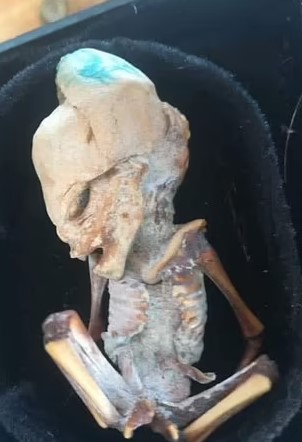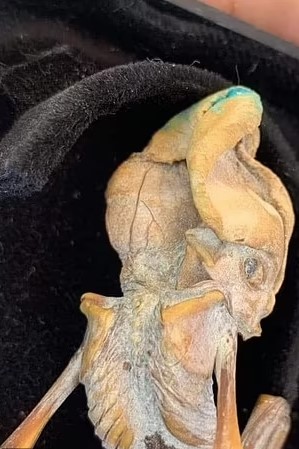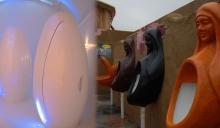
A mummified fetus with an elongated skull discovered in Colombia has sparked speculation about its origins, with some suggesting it could be an "alien" or a "tiny cave-dwelling humanoid" that lived over 800 years ago.
The mysterious findings have captured the attention of researchers and enthusiasts intrigued by the possibility of ancient extraterrestrial life.
According to reports, the mummified fetus, which still retains signs of an umbilical cord, was discovered in a remote area called "el cerro de los enanos" ("the Hill of the Dwarves") in Colombia.

The images of it were sent anonymously to the reporter, Josep Guijarro, who suggested that it could be of extraterrestrial origin.
According to Guijarro, the mummified remains bear an uncanny resemblance to the infamous alleged cave-dwelling "tiny humanoid" discovered in Peru.
However, most scientists argue that both specimens are likely stillborn human fetal remains rather than extraterrestrial beings.
Despite this, the discovery of this new mummified fetus has reignited the hopes of those who believe in ancient alien theories.
The reporter, Guijarro, who is now a UFO researcher and author, received the terrifying photos and shared them with the public.
He maintains his viewpoint labeling the fetus as an alien, citing factors such as fetal size and the presence of an umbilical cord that resemble those of terrestrial mammals.

Guijarro's approach was different from the sensationalism surrounding previous claims of "alien mummies" presented in Mexico's Congress.
The elongated skull and slated eyes of the mummified fetus have led to speculations about its possible extraterrestrial origin.
Some researchers suggest that it could be a member of an ancient humanoid species that inhabited the Earth centuries ago.
However, scientists suggest that these unusual characteristics are most likely the result of natural human variation or deformities.
Previous investigations into similar alleged "alien mummies" have concluded that they are human-made and not of extraterrestrial origin.

Forensic archaeologists have meticulously analyzed such specimens and determined that they are either stillborn human fetuses or artificially manipulated remains.
In a stunning revelation on Spanish television, Barcelona-based entrepreneur and UFO hunter Ramón Navia-Osorio Villar claimed that the mysterious remains known as 'Ata' were evidence of a legendary race of tiny humanoids.

According to Navia-Osorio, these beings were believed to be very small in stature, lived in caves, and only ventured out at night, which could explain their distinctive almond-shaped eyes.
Guijarro expressed an openness to Navia-Osorio's notion that the skeleton may not be alien, but a member of an ancient, tiny race of people who allegedly co-existed with the Aymara people of the Andes mountain range.
Professor Siân Halcrow, a biological anthropologist, stated that the skeleton matches the profile of an ordinary human fetal skeleton and that theories suggesting otherwise lack scientific evidence.

Halcrow's analysis indicated that the skeleton likely belonged to a premature fetus that died less than four months into pregnancy.
The mummy's unique features were attributed to the natural desiccation processes in the high-altitude Atacama desert.




